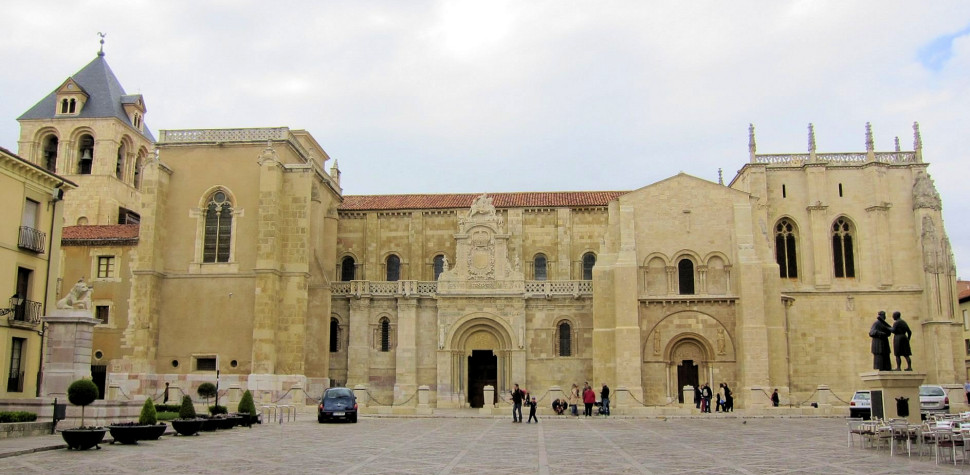The Real Basilica De San Isidoro
dates from the 10th - 12th centuries. Here is the tomb of Saint Isidore of Seville, who was Archbishop of Seville in the 7th century and a famous Visigothic Doctor of the Church. Right next to the church is the burial place of the kings of León-Castile, the so-called Panteón de los reyes.

The tower with the cockerel was originally a defence tower and part of the city wall.

The Cordero Portal.
The left figure represents St. Isidoro, the right figure St. Pelayo. A predecessor church was dedicated to St. Pelayo.
In the tympanum, the lower half depicts the sacrifice of Isaac.
Above it the Lamb of God. The lamb, Spanish 'el cordero', is the namesake for the portal.


The Perdon Portal.
On the left is Paul, on the right Peter
Three scenes are depicted in the tympanum:
(from left to right) Ascension, Descent from the Cross, 3 Marys at the (empty) tomb of Christ.



A view of the interior of the church. On the right side by the choir is the statue of St. Isidoro with crozier. Click on him!
The large cloister of the monks is open to the public. From here there is access to the Royal Crypt.

Romanesque elements in the cloister


From the cloister a view of the tower of the cock with a weathervane from the 12th century. It is a copy. The original is in the museum. Click on the rooster!

Gothic part of the cloister
Because of the unique ceiling paintings, the royal crypt, the Panteón real is also called the "Sistine Chapel of the Romanesque". The ceiling paintings give a vivid insight into the pictorial and everyday world of the 12th century. They are very well preserved and show biblical and everyday scenes in great colorfulness.


Leon